If you were alive in 2013, you're in this photo. Right here:
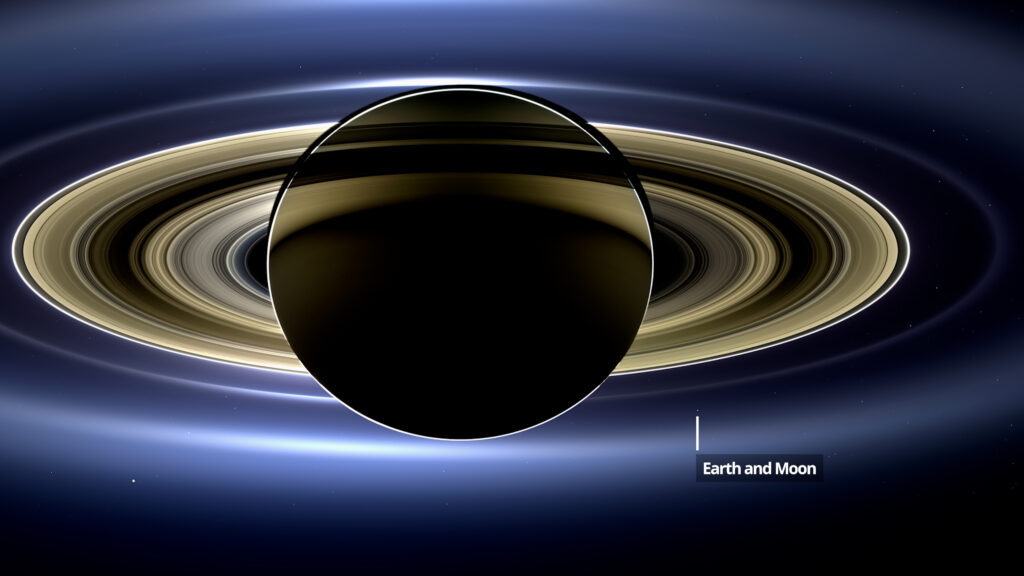
Saturn, its rings, and Earth captured in enhanced colour. Image Credit: NASA/JPL-Caltech/Space Science Institute
You might have already guessed the planet: Saturn, the sixth planet from the Sun, surrounded by its iconic rings.
The image, "The Day The Earth Smiled", is just one of the many stunning images captured by Cassini, a NASA spacecraft that spent 13 years orbiting Saturn.
Let's take a look.
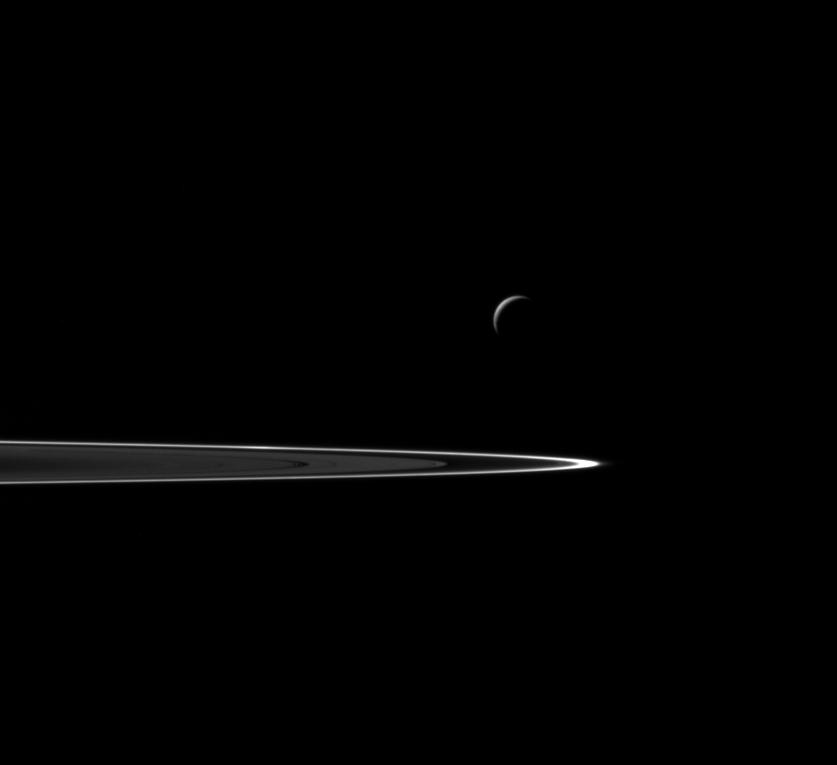
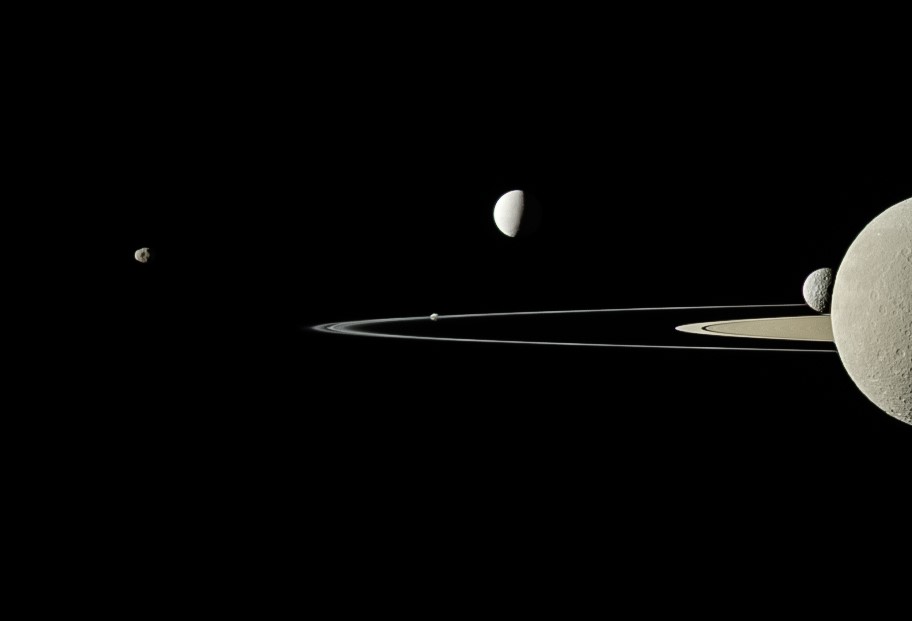
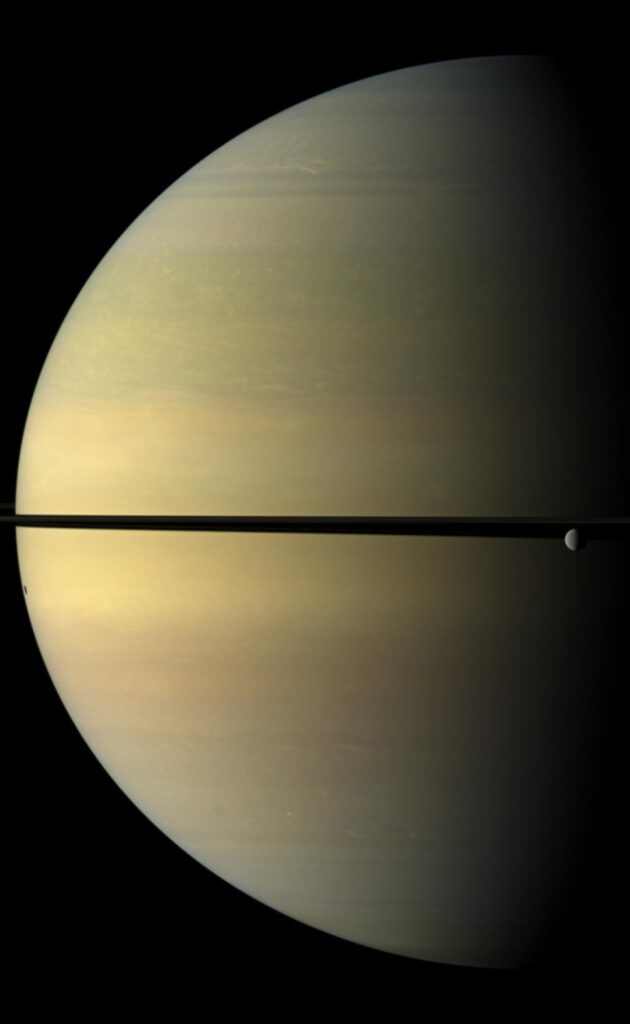
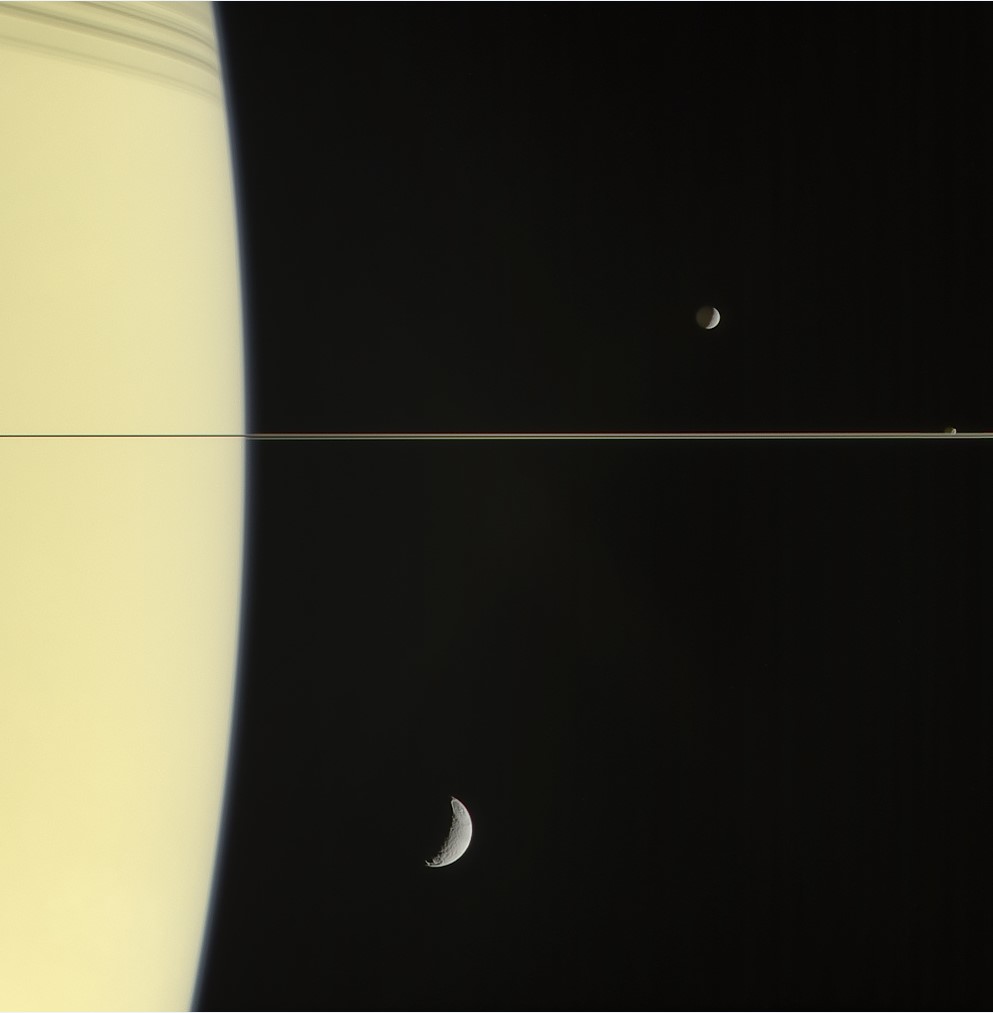
Ring images from Cassini. Image Credits: NASA/JPL/JPL-Caltech/Space Science Institute
Where did the rings come from?
Saturn's rings may be its most iconic feature, but they're not actually that old.
Scientists think the rings formed less than a hundred million years ago, when the collision of two icy moons totally restructured the orbit around Saturn.
That means early dinosaurs would not have been able to see the rings, if they had the telescopes to view it.
The rings won't stick around that long either, at least on astronomical time scales. Ultraviolet light from the Sun and plasma from meteoroids are breaking up the rings, causing them to fall on the planet as "ring rain".
Current estimates suggest the rings will be gone in less than a hundred million years - a mere blip in cosmic time.
What's going on inside the rings?
Given the moons that created them, it's not surprising to hear the rings are mostly made from water ice, with trace amounts of rock and dust.
Even still, the rings look quite different to each other.

Image Credit: NASA/JPL/Space Science Institute
The innermost D ring is not really visible from telescopes on the ground - its existence was only confirmed when the Voyager missions visited in the early 1980s.
The C ring is shiny and see-through, and movements from within Saturn's core dictate its grooves. Scientists can "read" these grooves, like sheet music, to better understand what's happening inside.
The B ring has surprisingly fine structure, and researchers still aren't sure exactly what causes it.
The A ring and very chaotic F ring host Saturn's shepherd moons, including Daphnis, Pan, and Prometheus.
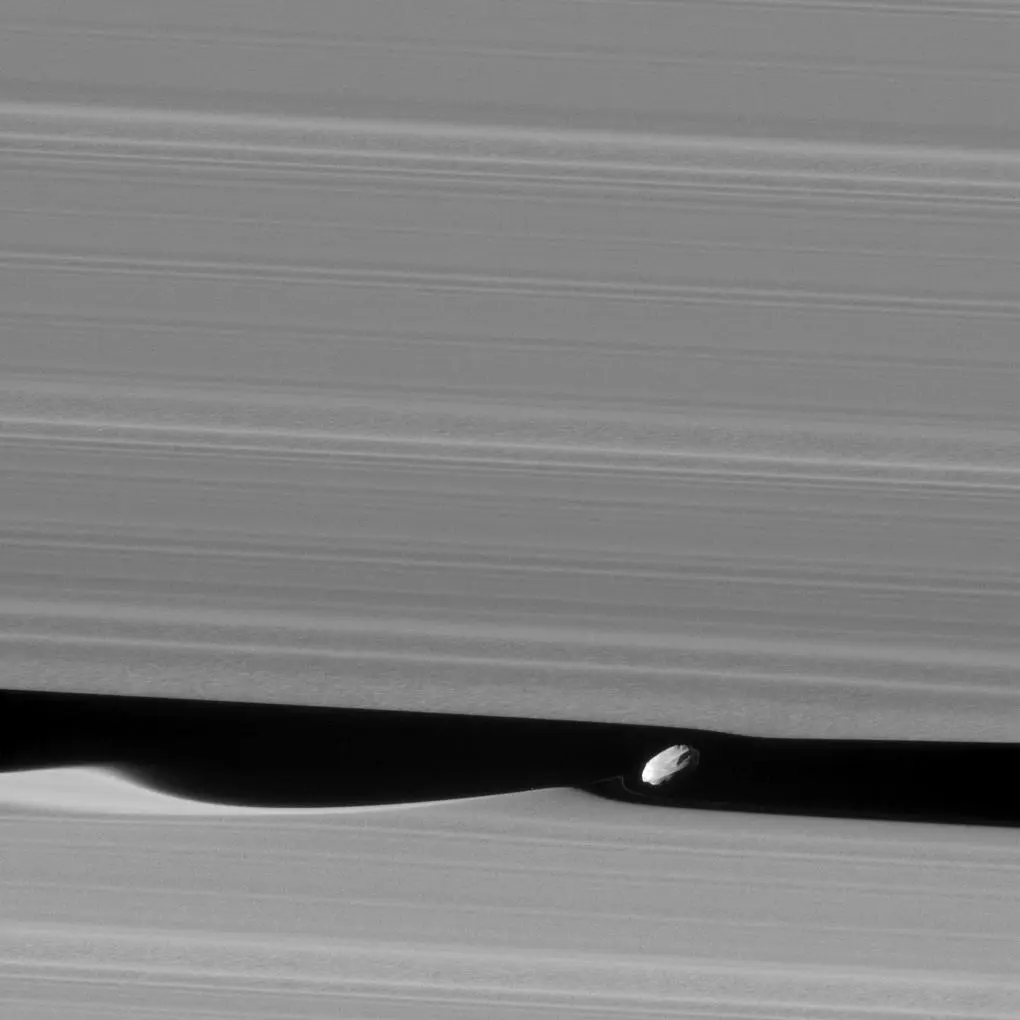
Daphnis making waves from inside its ring gap. Image Credit: NASA/JPL/Space Science Institute
Shepherd moons clear gaps in the ring, and can kick ring matter up due to the moon's gravity or orbital resonance.
The G ring has bright arcs that travel across the ring in line with the moon Mimas, which looks a lot like the Death Star from Star Wars.
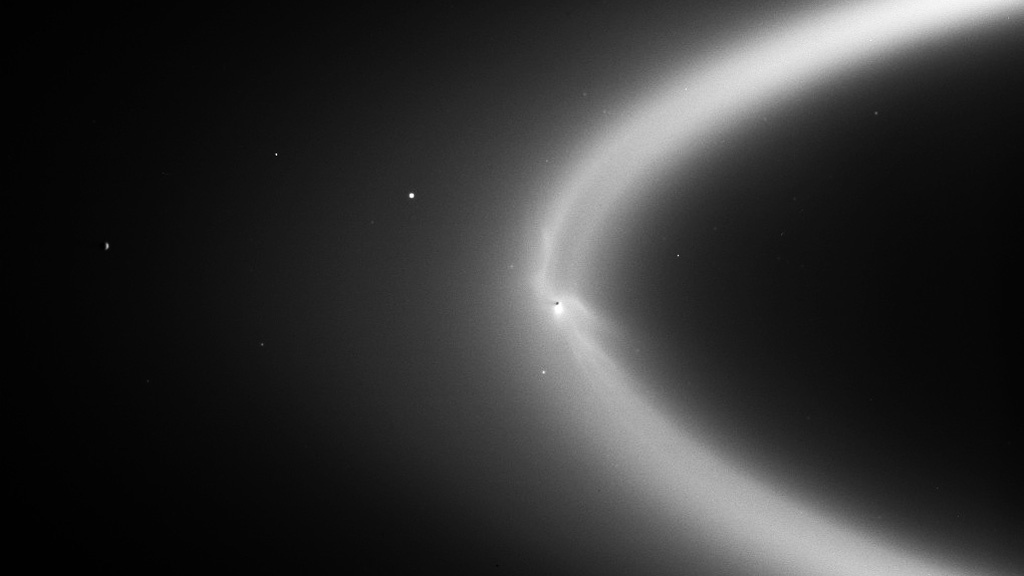
Saturn's E ring, caused by ocean plumes from the moon Enceladus. Image Credit: NASA/JPL/Space Science Institute
Finally, the E ring doesn't look much like any other ring. It's puffy and misty, and that's because it's made from ocean spray from the moon Enceladus.
Signs of life in the Enceladan ocean?
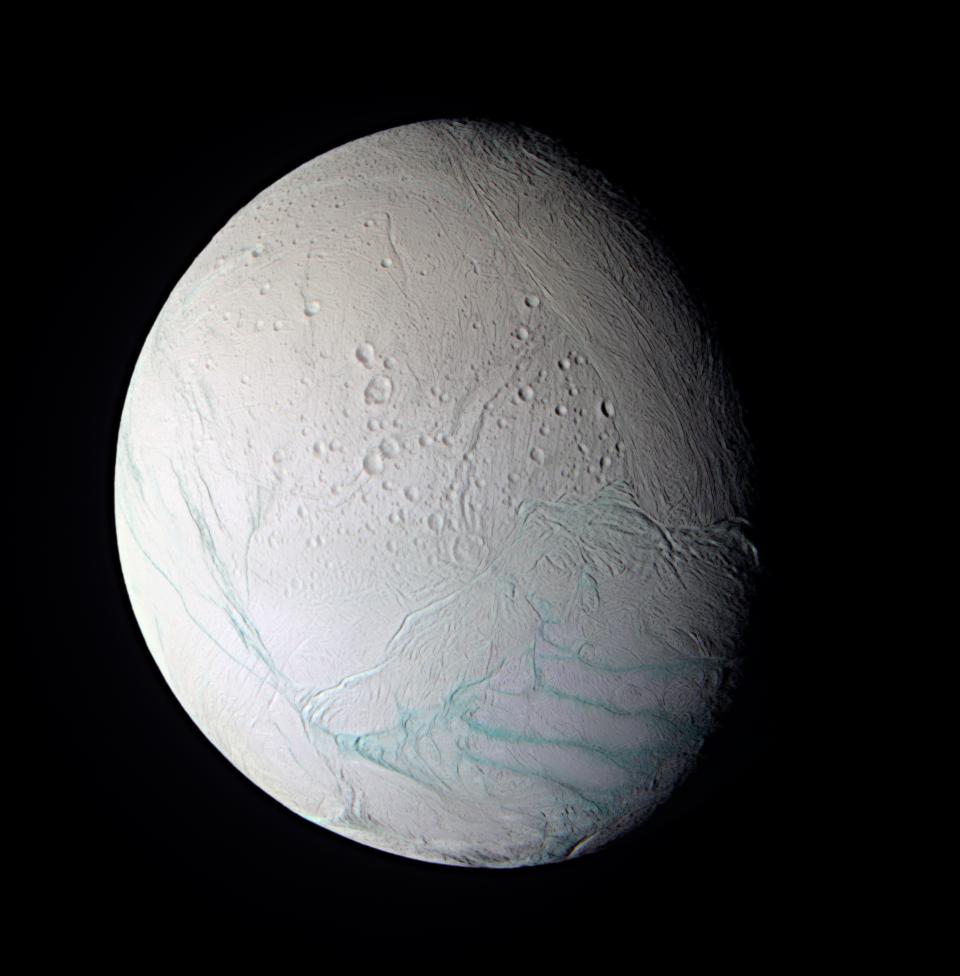
Enceladus in false colour, from UV, infrared and green light. Image Credit: NASA/JPL/Space Science Institute
Enceladus is perhaps the strangest place in Saturn's orbit. It's only 500km across and has a typical icy surface.
But beneath the icy crust lies a potentially global liquid water ocean, melted from Saturn's gravitational influence.
Water ice from that ocean is constantly blasted into space, forming the misty E ring.
Cassini flew through the plumes and sampled the E ring, and found every element needed for life.
We typically think of life as needing "CHNOPS", or Carbon, Hydrogen, Nitrogen, Oxygen, Phosphorus, and Sulphur.
All have been found in the plumes or the E ring.
| Element | Molecule | What is it? |
| Carbon | CH4 | Methane |
| Hydrogen | H2 | Molecular hydrogen |
| Nitrogen | NH3 | Ammonia |
| Oxygen | CO2 | Carbon dioxide |
| Phosphorus | Na3PO4 | Sodium phosphate |
| Sulphur | H2S | Hydrogen sulphide |
Exploring the strange world of Titan
Cassini did not come to Saturn alone. It brought a sidekick supplied by the European Space Agency: Huygens.
Its mission was to detach and land on Saturn's moon Titan.
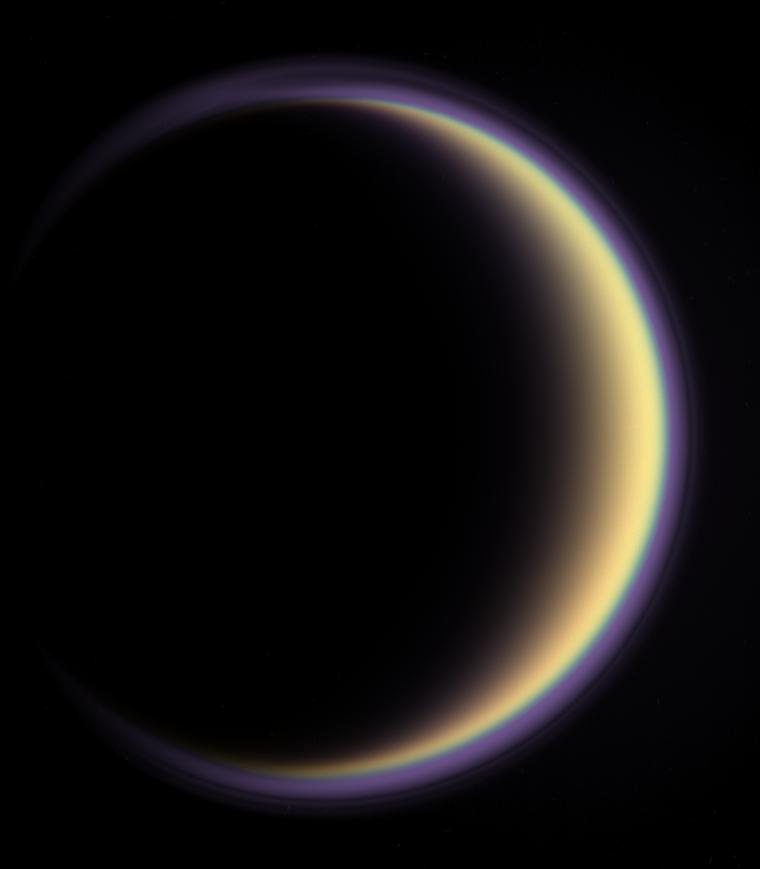
Titan in enhanced colour. Image Credit: NASA/JPL/Space Science Institute
Titan is an outlier in the Solar System: The only moon with an atmosphere (thicker than Earth's!) and the only other world with liquid surface lakes - but they aren't made from water.
Titan is extremely cold: -179 degrees celsius.
At these temperatures, ice is as hard as rock. The lakes, then, are actually made from hydrocarbons - polished smooth stretches of methane and ethane.
Huygens descended into Titan in 2005, and captured this image from the surface:
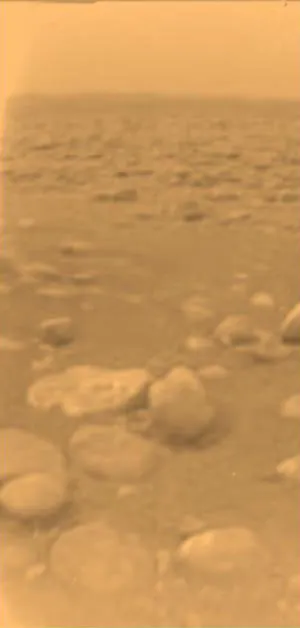
Cassini's Grand Finale
Cassini's mission didn't end with the Huygens deployment - it lasted another 12 years.
During that time the spacecraft did all kinds of amazing science, including that beautiful image from the start of the article.
Along with capturing seven billion humans, Cassini saw Mars, Venus, and a host of the sixth planet's beautiful moons.
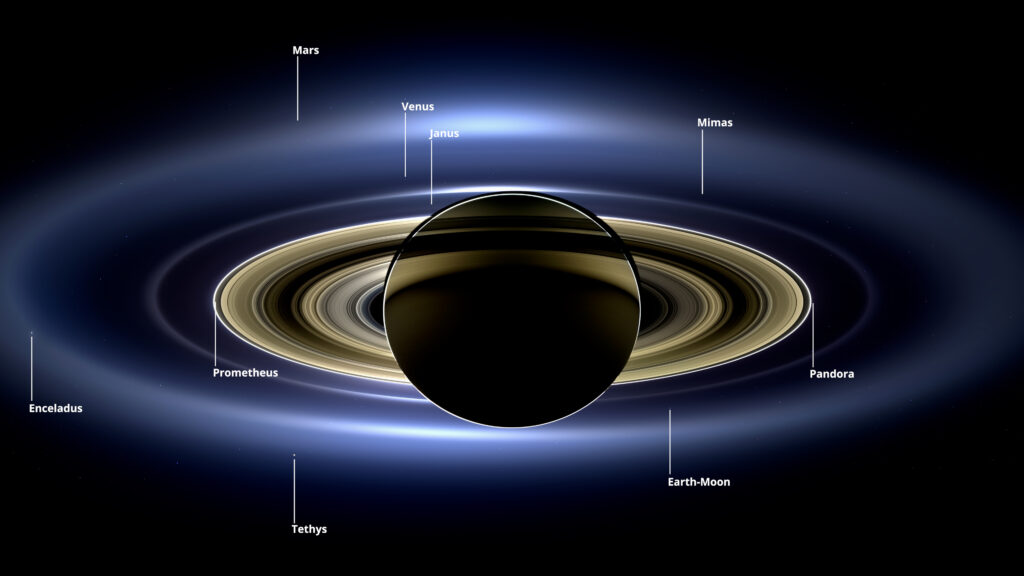
Saturn in enhanced colour with planets and moons annotated. Image Credit: NASA/JPL-Caltech/Space Science Institute
Cassini said goodbye to Saturn in 2017, with a Grand Finale that took it straight into Saturn's churning atmosphere.
The spacecraft completed 22 fatal orbits, travelling at up to 126,000 kilometres per hour. It returned priceless data on Saturn's atmosphere before it broke up in fiery glory.
Now, Saturn stands alone, with no human-made presence around the sixth planet.
Future missions are planned, including the Titan Dragonfly and a potential Enceladus lander.
But until then, we have an array of stunning images from a long-lived spacecraft that brought us closer than ever to this beautiful ringed planet.
Further reading
The Day the Earth Smiled (nasa.gov)
Cassini-Huygens - NASA Science
New Simulations Shed Light on Origins of Saturn’s Rings and Icy Moons - NASA


